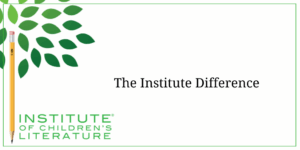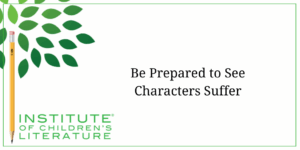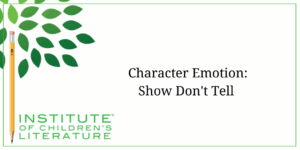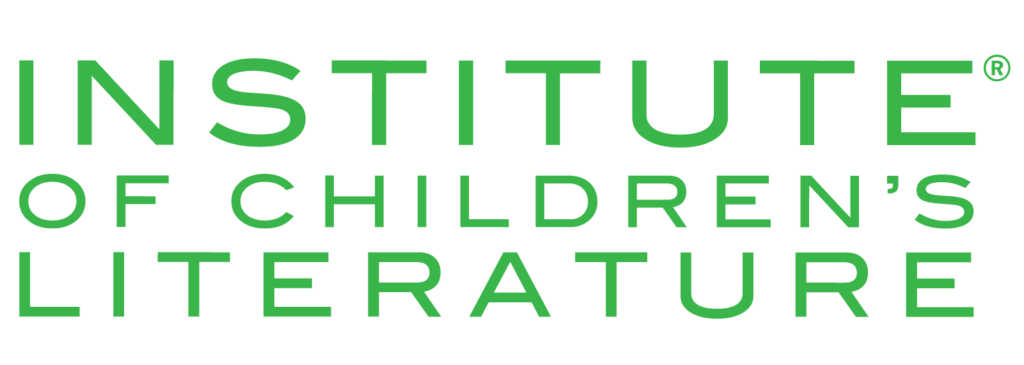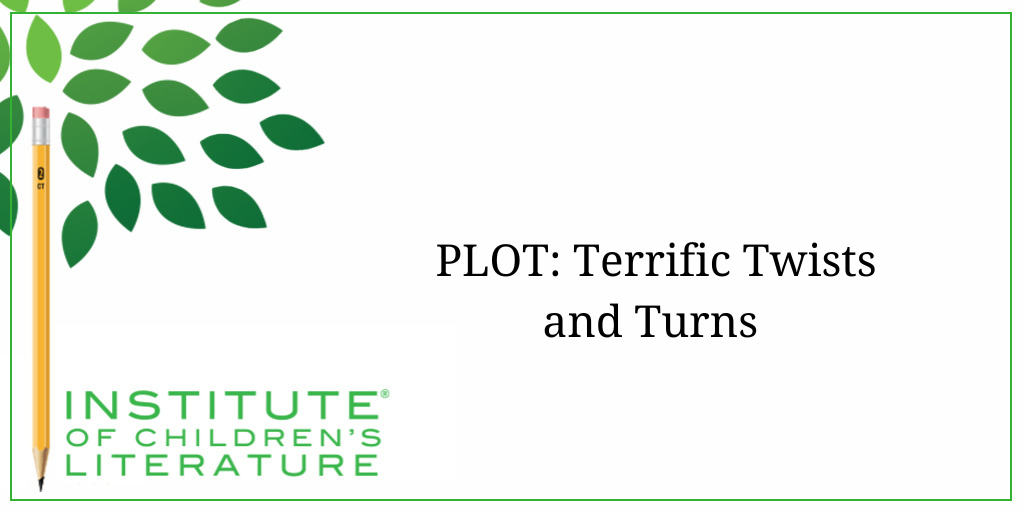
- Date: June 26, 2025
- Author: Jan Fields
- Category: Writing for Children Blog
- Tags: planning, plot, plot twist
We teach our students how to write and get published!
View our Course Catalog >
PLOT: Terrific Twists and Turns
By and large, plots are not completely straight lines. Straight lines are great for getting quickly from one spot to another, but they're dull. So, every plot turns as you travel with the characters to the destination. When the turn is sharp and produces surprise in the reader and characters, then you have a plot twist. If you're writing a mystery, a red herring (where you make the reader believe something is an important clue when it is not) is a type of plot twist. Any plot twist will do something similar to the red herring. It is something in the story that makes the reader believe something, then when the reader learns the truth and is surprised, that is the point of the plot twist. 
Picture Book Plot Twists
Plot twists can occur in every type of children's book. The well-known picture book, The Monster at the End of this Book has a delightful plot twist at the end of the book. The text of the book consists of Grover, a Sesame Street Muppet with blue fur, begging the reader not to turn pages as there is a monster lurking at the end of the book. Grover grows increasingly frantic as the child turns pages until the end when the reader (and Grover) learns that the monster at the end of the book, and, in fact, all through the book, was Grover himself. It's a twist that seems to grow funnier for very young children with every reading of the book.
This element of re-readability is important in choosing a plot twist for a picture book, because a book that is “spoiled” once you know the plot twist won't work for publishers. They know parents look for picture books their children will love for a long time. The plot twist in The Monster at the End of the Book continues to work because after learning the book's “secret,” the child is then put in the position of being the one “in the know” as Grover tries to prevent the continuation of the story. The book has some similarity to Don't Let the Pigeon Drive the Bus, because that book also puts the child in the superior position. The child becomes the one being entreated, the one with the power in the exchange. And that's a rare and heady feeling for very young children.
So, a plot twist in a picture book might be funny, and often is, since surprise is the core of humor, but it must have something more so that it continues to work even when the surprise no longer exists.
Early Reader Plot Twists
In the early chapter book, Sydney & Taylor and the Great Friend Expedition by Jacqueline Davies, the story includes several plot twists. The two friends Sydney and Taylor go in search of a new friend (or preferably several), but each effort seems to end in failure. The nature of each failure amounts to small plot twist. If the plot was straight and flat, Sydney and Taylor would go in search of friends and simply find them. But that's not how it works. They meet new potential friends, but it doesn't seem as if their efforts are actually working. Then a storm breaks out, and they rush home. That's when the friend effort suddenly pays off as the potential friends they met show up seeking shelter from the storm. At that point, we seem to have solved the plot problem. Sydney & Taylor now have friends. It's great. But then their home springs a leak and begins to flood, endangering all of them. That is a huge plot twist which hits just as the plot was beginning to feel as if it were coming to an end. Now all these creatures must deal with the rising water. Another plot twist solves the problem and leads them to yet another friend.
 Because early chapter books aren't meant to be read over and over, it doesn't matter if the plot twists don't have that extra value that is required for picture book plots. Sydney & Taylor books do have re-readability, but it is based on the warmth of the relationship between Sydney and Taylor, not on the plot twists in each book. The plot twists in early reader books can be small (such as giving a gift to a potential bunny friend only to have the bunny plan to eat it!) or they can be big (like the flood just when everything seemed so great). Because of the age of the early reader, they shouldn't be too scary or upsetting. Things can get a little tense or a little sad but must quickly be resolved for a hopeful and positive ending.
Because early chapter books aren't meant to be read over and over, it doesn't matter if the plot twists don't have that extra value that is required for picture book plots. Sydney & Taylor books do have re-readability, but it is based on the warmth of the relationship between Sydney and Taylor, not on the plot twists in each book. The plot twists in early reader books can be small (such as giving a gift to a potential bunny friend only to have the bunny plan to eat it!) or they can be big (like the flood just when everything seemed so great). Because of the age of the early reader, they shouldn't be too scary or upsetting. Things can get a little tense or a little sad but must quickly be resolved for a hopeful and positive ending.
Novel Plot Twists
In Middle Grade or Young Adult novels, plot twists can be more emotionally compelling. It's still a kind of scale. You shouldn't scare a middle grade reader as badly as a young adult reader, for instance. Once you reach novels for older teens, you can generally have plot twists that are as frightening or upsetting as you might consider for an adult reader. The overall tone of YA books is often more hopeful than adult books, but they can still go to some fairly dark places.
Making Your Own Twists
Plot twists are basically created by leading the reader in a specific direction with the book, then turning sharply. A character you thought was good or trustworthy turns out to be bad, or sometimes the opposite is true, especially in books for younger kids. Characters children found scary can turn out to be funny or nice or helpful. A situation that seemed to be resolved can unravel suddenly. Plot twists are about setting up expectations, then going somewhere else with the story. Plot twists still require logic. It must make sense that the story turned in this new direction.
Let's take the Sydney & Taylor book's plot twist as an example. The story seemed to have resolved. New friends have shown up to Sydney and Taylor's house seeking shelter from a storm, and the hospitality they are shown is clearly building a friendship. The author wants to take the story somewhere unexpected so that the resolution isn't complete so early. She would have lots of choices. Sydney and Taylor could make a social faux pas that upsets everyone, making them leave. Or the new friends could begin arguing about something that Sydney and Taylor have no control over. Or maybe someone new comes in seeking shelter, but it's someone too scary to be around, like a snake or giant spider. But instead, the author looked at the situation she had already set up. She had sent Sydney and Taylor home, stopping their search for friends, because it had begun to rain. By the time they got home, it was a fierce storm. That worked perfectly to accomplish what the author needed. It sent the friends home. It sent the new friends to them. Could it also be the source of the plot twist? Of course, it turned out it was. Flooding, caused by the storm, upended the cozy scene, creating a big plot twist. 
As with everything in a plot, events build upon what came before. That is true of the plot twists as much as it is true of everything else. If you want to introduce a twist, you have to build in the logical structure to support it. You must build in this structure in a way that the reader doesn't see the twist coming. In the Sydney & Taylor book, all the conversations and the drama of the rain and arrival of friends keep the reader occupied. No one is worrying about a flood. But it is a bad storm. We've been told that. So, the flood makes sense from what came before.
Plot twists delight readers. They can be funny or tense or terrifying, but they always come with a punch of surprise. Because they are so beloved of readers, it's worthwhile to consider them for your own stories. Look for them in the mentor books you're reading. Look at how the authors set up the twists so then when they arrive, they are both surprising and sensible. Then, let your plots take their own twists and turns, always building on the journey that came before. Do that, and you'll make your stories more engaging and compelling. Whether funny or serious, it's always a good time to do the twist!
Related Articles for Planning Plot and its Twists
With over 100 books in publication, Jan Fields writes both chapter books for children and mystery novels for adults. She’s also known for a variety of experiences teaching writing, from one session SCBWI events to lengthier Highlights Foundation workshops to these blog posts for the Institute of Children’s Literature. As a former ICL instructor, Jan enjoys equipping writers for success in whatever way she can.

